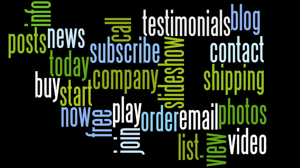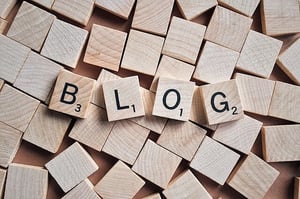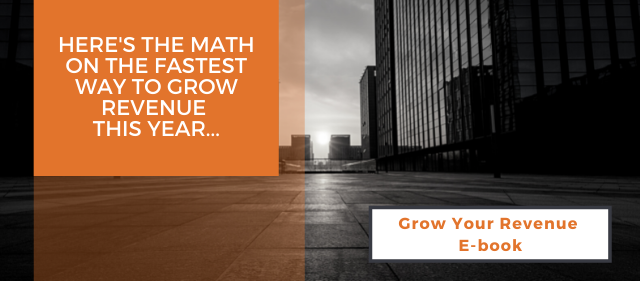SHARE
Why The Difference Between Features and Benefits Matters

The difference between features and benefits is well-known to copywriters but a mystery to many others. And this difference could make the difference when you need to convert leads to sales. What is it about your product or service that is considered a feature? How do you separate a feature from a benefit?
To start, think of a feature as akin to a characteristic. A feature is what a product or service offers on a basic level: i.e. a disposable coffee cup. Feature: it’s disposable.
“Features work on a factual level rather than an emotional one...” (Printwand, 2012)
Now let’s look at the benefits of the disposable cup: you pick it up where your coffee is brewed, and throw it out there if you’d like (and save cleaning time); and you don’t have to finish your coffee where you buy it; you can take it on the road (and save travel time).
A characteristic on its own isn’t a powerful marketing agent. This is where benefits come in.
Features say something about an object’s capability. This is significant, but it doesn’t tell the consumer why the object matters (why it’s helpful; how it solves their problem etc.). Benefits take the product information further and demonstrate how it impacts the end user.
The Difference Between Features And Benefits Is WIIFM
Benefits answer your Target Audience’s (TA) question: “ What’s in it for me (WIIFM)?”. They tell your consumers why they should care about your product or service - how it works to fulfill their needs.
Here is a quick & handy list to assist you in telling the difference between features and benefits.
Features → WIIFM → Benefits
| Feature | WIIFM | Benefit |
| Product or service qualities | “What do those qualities mean for me/the consumer?” | The qualities impact the consumer in [x] way: i.e. saves the consumer money or another trip to the store, etc... |
| Object; product or service focused; consumer not yet emotionally connected (Printwand, 2012) | “Why should I care about this product/service detail? What makes it more than an object?” | [X] will make you feel happy, relieved, excited, entertained etc... |
| What & How of the product. | “Why was the product designed this way? How did it come to be, and where are my needs in the equation?” | The design means [x] for the consumer: i.e compact tech design means easy to carry for travel, which means the consumer doesn’t have to leave it behind and miss important connections, etc... |
Features tend to be physical in nature and product focussed. Benefits are people focussed. Benefits tell your TA what they can accomplish by choosing your business. They convert leads to sales by making the decision easier for the consumer.
Adopt The Mindset Of Your Consumer (Target Audience) To Find Out What They Want And Where They Want It
Copywriters create a picture of their target audience by researching their interests and getting to know them. With the array of tools available online, you can do this too. For instance, offering a survey at their favourite online haunt can unearth clues as to what product or service your target audience wants. You could also take notice of what’s trending on social media so you can deliver what they want, where it’s needed.
When you’ve done your target audience research (and created buyer personas to improve inbound marketing), you’ll know what matters to your target audience. You can speak directly to them and let them know you take an interest in who they are. People like you better when you show that kind of interest.
Remember, your target audience is searching for solutions - benefits - at the beginning of the buyer’s journey (Hubspot, 2016). Supply the solutions up front to stay on their radar.
The Benefits Of Benefits For Companies That Use Blogs
Understanding the differences between features and benefits also means consumers are going to remember your company because you:
- Speak directly to their expectations
- Sell an experience, not just a product
- Translate features into clear benefits, so the consumer feels confident about choosing your product and doesn’t feel the need to look elsewhere for solutions.
This can all be accomplished in a blog. You can use video, images and text to show your audience the meaning beyond features, and how your product or service solves their problem. Furthermore, consistent posting on your blog shows your commitment to those needs.
Blogging is also helpful when you’re researching the characteristics of your ideal consumer (target audience). Companies that use blogs have an online forum through which to form a picture of their target audience. Blogs are also useful for building and maintaining customer relationships and loyalty. Open your blog posts up to comments and see which benefits really hit home with consumers. This keeps an open line of communication with customers and gives your business direction moving forward.
If you were a reader, what would you want to see on your site? Give this to your Target Audience.
Companies that use blogs have an edge when it comes to converting leads to sales online. They build connections to get into the heads of their TA and then provide them with meaningful content that answers “WIIFM?”.
People are the reason knowing the difference between features and benefits matters.
Know How Your Customers Use Your Blog To Make Buying Decisions
Boost your inbound marketing potential with this free resource and reap the benefits of blogging - an inbound marketing activity proven to strengthen business results.
Your business blog can lead customers to your store the same day they search for your service. Get the information you need to use your business blog, right now. You'll find out how you can:
- Increase online traffic (to reach more consumers),
- Generate qualified leads (to save your sales team time)
- Make more sales online (to make more profit).
References
http://www.printwand.com/blog/benefits-vs-features-the-crucial-key-to-selling-your-product
Topics
- Content Creation (297)
- Growth-Driven Design Websites (167)
- Inbound Marketing (145)
- Sales Growth (133)
- Tangible Words (111)
- Search Engine Optimization (85)
- Social Media Marketing (83)
- Hubspot (76)
- Blogging for Business (75)
- Economic Development (64)
- Events & Training (60)
- Company Growth Podcast (49)
- Manufacturing (47)
- Tourism (46)
- Email Marketing (42)
- Case Stories (40)
- Testimonials & Client Feedback (36)
- Education and SaaS (23)
- Google (21)
- Careers (19)
- Inbound Marketing Agency (19)
- Cool Companies (18)
- FAQ (16)
- Alysha Dominico (13)
- Associations (7)
- Food and Beverage (7)
TW Blog Sign-Up
Learn more about how to grow your business and improve your sales team process.







